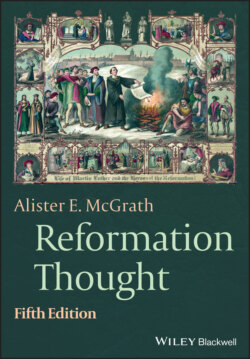Читать книгу Reformation Thought - Alister E. McGrath - Страница 26
2 A Changing World The Cultural Backdrop to the Reformation
ОглавлениеTo understand the origins of the Reformation and its religious and intellectual agendas, it is necessary to reflect on the culture of western Europe in the fifteenth century. Recent scholarship has placed an emphasis upon the need to place the Reformation movement in its historical context and to try to integrate the insights of late medieval, Renaissance, and Reformation studies into a larger vision of this “Age of Reformation.” The separation of these fields – for example, through each having their own university chairs, journals, and learned societies – has done little to help this process of synthesis and consolidation, which is essential if we are to understand both the intellectual context within which the ideas of the Reformation emerged, and the reasons why they proved to have such appeal.
During the fifteenth century, as we noted in the previous chapter, many protest movements emerged, urging reform of the church at multiple levels. Some of these movements – echoing themes from Jan Huss’ fourteenth-century campaign for reform in Bohemia – were entangled with local demands for regional autonomy; others expressed concern at the excessive wealth and social influence of the church. Some are best seen as processes of reform and renewal, initiated by influential figures within the church, such as the reforms introduced in Spain during 1480s by Francisco Ximénez de Cisneros, which laid the foundations for the church playing a major role in the Spanish “Golden Age” of the sixteenth and early seventeenth centuries.
Yet it is important to look beyond these demands for reform and consider some deeper changes in outlooks and expectations on the eve of the Reformation in western Europe, which help us understand the emergence of reforming movements, the agendas they pursued, and their popular appeal. The present chapter offers a sketch-map of some relevant aspects of late medieval European culture which will help contextualize the developments of the sixteenth century. The two chapters which follow examine in some detail the two most important intellectual forces in late medieval Europe: Renaissance humanism and scholastic theology.
